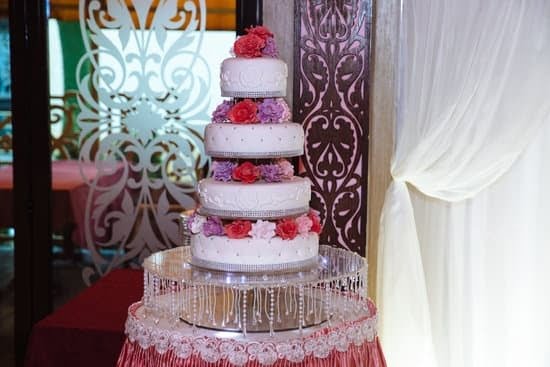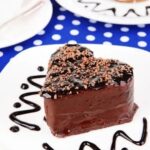Fondant is a versatile confectionary paste that has become a popular choice for decorating cakes due to its smooth finish and ability to create intricate designs. In this article, we will guide you through the step-by-step process of how to decorate a cake with fondant, from preparing the cake for decorating to troubleshooting common issues that may arise.
Fondant can be used to cover an entire cake or to create decorative accents such as flowers, shapes, and figures. It offers endless possibilities for creativity in cake decorating and is a favorite choice for both beginner and experienced bakers alike.
To get started, you will need a few essential supplies including fondant, rolling pin, icing spatula, and various shaping tools. We will discuss in detail the supplies needed for decorating a cake with fondant in the upcoming sections of this article. So let’s delve into the world of fondant cake decorating and learn how to achieve professional-looking results right in your own kitchen.
Supplies Needed for Decorating a Cake With Fondant
When it comes to decorating a cake with fondant, having the right supplies is essential for achieving a professional-looking result. Here is a list of the key items you will need to decorate a cake with fondant step by step:
1. Fondant – This is the most important supply for fondant cake decorating. You can either buy pre-made fondant or make your own using marshmallows and powdered sugar.
2. Rolling pin – A large, smooth rolling pin is necessary for rolling out the fondant to cover the cake.
3. Cornstarch or powdered sugar – Sprinkling either of these on your work surface will prevent the fondant from sticking as you roll it out.
4. Cake smoother – This tool helps in smoothing out any air bubbles and creases when applying the fondant to the cake.
5. Fondant cutters and molds – These will come in handy when creating decorative accents and 3D shapes for your cake.
6. Edible color gels or dusts – If you want to add color to your fondant, these products are perfect for tinting the fondant various shades.
7. Piping gel or water – Having this on hand will help adhere decorations onto the fondant-covered cake.
8. Brush set – A small food-safe brush set should be used to apply color dusts and piping gel when decorating with fondant.
By having these supplies at hand, you will be well-prepared to start your journey into how to decorate a cake with fondant step by step, ensuring that you have everything needed for success.
Preparing the Cake for Fondant Decorating
When it comes to decorating a cake with fondant, proper preparation is key to achieving a smooth and professional-looking finish. Before you can start working with fondant, it’s important to ensure that your cake is properly prepared. This includes making sure that the cake is level and free from any crumbs or imperfections on the surface.
To prepare your cake for fondant decorating, start by trimming any domed tops to create a level surface. You can use a long serrated knife or a cake leveler for this process. Once your cake is level, apply a thin layer of buttercream or ganache all over the cake to seal in any crumbs and create a smooth base for the fondant.
After applying the crumb coat, let it set in the refrigerator for at least 30 minutes to firm up. This will make it easier to handle the cake when you’re ready to cover it with fondant. Additionally, chilling the cake will help prevent bulging or sagging of the fondant once it’s applied.
Properly preparing your cake for fondant decorating will ensure that you have a clean canvas to work with and will ultimately contribute to the overall professional look of your finished creation. Following these steps will set you up for success as you continue on with the process of decorating your cake with fondant.
Rolling Out Fondant and Covering the Cake
To create a beautifully decorated cake with fondant, it’s essential to know how to properly roll out the fondant and cover the cake. This step is crucial in achieving a smooth and flawless finish on your cake. Below, we’ll provide a step-by-step guide on how to roll out fondant and cover your cake with it.
Step 1: Prepare Your Work Surface
Before rolling out the fondant, make sure to prepare your work surface by dusting it with powdered sugar or cornstarch. This will prevent the fondant from sticking to the surface and make it easier to roll out.
Step 2: Knead the Fondant
Knead the fondant until it’s smooth and pliable. If the fondant is too hard, you can warm it up by kneading it in your hands or microwaving it for a few seconds. Once the fondant is soft and easy to work with, you’re ready to roll it out.
Step 3: Roll Out the Fondant
Using a rolling pin dusted with powdered sugar or cornstarch, gently roll out the fondant into a circle that is about 1/8 inch thick and larger than the diameter of your cake. Be sure to lift and rotate the fondant as you roll to prevent sticking.
By following these steps, you can carefully roll out your fondant and cover your cake smoothly and evenly. This sets a solid foundation for adding decorative accents and creating 3D shapes and figures using fondant. Mastering this step will elevate your cake decorating skills immensely.
Adding Decorative Accents With Fondant
Choosing the Right Fondant Colors
When it comes to adding decorative accents with fondant, choosing the right colors is crucial. Whether you’re creating flowers, bows, or other designs, having a variety of colors on hand can make the process much easier. Consider investing in a set of gel food coloring to mix and match shades for your fondant decorations.
Making Fondant Decorations
To add decorative accents to your cake with fondant, you’ll need to start by rolling out the fondant to your desired thickness. Once rolled out, use cookie cutters or specially shaped fondant cutters to create the designs you want. You can also use a sharp knife or kitchen shears for more intricate shapes and details.
Attaching Fondant Accents to the Cake
After cutting out your fondant decorations, it’s time to attach them to the cake. To ensure they stick securely, lightly brush the back of each piece with a small amount of water or edible glue before placing it onto the cake. Be gentle when handling and positioning the decorations, as fondant can tear easily if handled roughly.
As you practice and gain experience working with fondant, you’ll discover new and creative ways to add decorative accents to your cakes. Experimenting with different techniques and designs will help you develop your own unique style when it comes to decorating with fondant. With patience and practice, you’ll be able to create stunning cakes that are sure to impress any crowd.
Creating 3D Fondant Shapes and Figures
One of the most impressive ways to decorate a cake with fondant is by creating 3D shapes and figures. This advanced technique can take your cake decorating skills to the next level and leave a lasting impression on those who see and taste your masterpiece. With the right tools, patience, and practice, you can create stunning fondant sculptures to adorn your cakes.
To make 3D fondant shapes and figures, you will need a few essential tools such as modeling tools, foam pads, food-safe paintbrushes, and edible glue. These tools will help you shape, texture, and assemble your fondant creations with precision. Additionally, having a variety of food coloring gels will allow you to add intricate details and lifelike colors to your fondant sculptures.
Start by kneading the fondant until it is soft and pliable. Then, use your hands or modeling tools to shape the fondant into the desired form. Whether it’s flowers, animals, or objects, creating 3D fondant shapes requires attention to detail and careful crafting. Once the shape is formed, allow it to dry slightly before adding any additional details or attaching it to the cake.
Mastering the art of creating 3D fondant shapes and figures takes practice and patience. As you continue to work on this skill, experimenting with different shapes and designs will expand your abilities as a cake decorator. With enough dedication, you’ll be able to impress everyone with your beautifully crafted fondant sculptures atop delicious cakes.
| Tools for Creating 3D Fondant Shapes | Techniques for Shaping Fondant Figures |
|---|---|
| Modeling tools | Knead fondant until soft |
| Foam pads | Use hands or modeling tools for shaping |
| Food-safe paintbrushes | Dry shaped figure slightly before adding details |
Troubleshooting Common Fondant Decorating Issues
When decorating a cake with fondant, it is important to be prepared for potential issues that may arise during the process. Common fondant decorating issues include cracking, tearing, and air bubbles, but with a few tips and tricks, these problems can be easily resolved.
One common issue when working with fondant is air bubbles forming beneath the surface of the fondant after it has been applied to the cake. This can create an uneven and bumpy appearance. To prevent this problem, ensure that the cake is properly smoothed and coated with a thin layer of buttercream before applying the fondant. After covering the cake with fondant, use a fondant smoother to gently press out any air pockets from the center toward the edges.
Another common issue is cracking or tearing of the fondant while covering the cake. This can happen if the fondant is rolled too thin or if it is stretched too much when being applied to the cake. To avoid this, roll out the fondant to an even thickness, taking care not to make it too thin. When covering the cake, gently smooth and press the fondant into place without pulling or stretching it.
Finally, if your fondant decorations are not sticking to your cake as desired, you can use a small amount of edible glue or water to adhere them securely. Apply a small amount of edible glue or water directly to the back of each decoration before carefully placing it onto your cake.
By being aware of these common issues and how to address them, you can confidently tackle any challenges that may arise while decorating your cakes with fondant.
| Common Issue | Troubleshooting Tips |
|---|---|
| Air Bubbles | Smooth out air pockets with a fondant smoother after applying fondant |
| Cracking/Tearing | Roll out fondant evenly and be mindful not to stretch it while covering the cake |
| Decorations Not Sticking | Use edible glue or water to adhere decorations securely |
Final Tips for Mastering Fondant Cake Decorating
When it comes to mastering the art of fondant cake decorating, attention to detail and practice are key. Here are some final tips to keep in mind as you continue perfecting your fondant decorating skills:
- Get Creative: Don’t be afraid to think outside the box and experiment with different colors, textures, and designs. Fondant is a versatile medium that allows for endless possibilities, so let your creativity flow.
- Use Proper Tools: Investing in quality tools such as rolling pins, cutters, and shaping tools can significantly enhance your fondant decorating experience. These tools will help you achieve smooth, professional-looking finishes on your cakes.
- Pay Attention to Temperature: Fondant can be sensitive to temperature changes. If it’s too warm, it may become sticky and difficult to work with. On the other hand, if it’s too cold, it could crack or harden too quickly. Finding the right balance is crucial for successful fondant decorating.
Ultimately, mastering fondant cake decorating takes time and patience. Each cake you decorate will provide valuable learning experiences that will help you improve your skills. By following these step-by-step guidelines and incorporating these final tips into your practice, you’ll soon be creating beautifully decorated fondant cakes that will impress friends, family, and clients alike.
Conclusion and Recap of Step by Step Fondant Decorating Process
In conclusion, decorating a cake with fondant may seem intimidating at first, but with the right tools and techniques, it can be a fun and rewarding experience. By following the step by step process outlined in this article, anyone can learn how to decorate a cake with fondant like a pro. From preparing the cake for fondant application to creating intricate 3D shapes and figures, each step is essential in achieving a professional-looking result.
It’s important to remember that practice makes perfect when it comes to working with fondant. Don’t be discouraged if your first attempt doesn’t turn out exactly as you envisioned. With patience and perseverance, you will improve your skills and create stunning fondant-decorated cakes.
In addition to following the step by step process, it’s also helpful to seek inspiration from cake decorating books, online tutorials, or even attending a class. Watching videos or observing experienced decorators can provide valuable insights and new ideas on how to decorate a cake with fondant step by step. And remember, have fun with it. Let your creativity flow and don’t be afraid to experiment with different designs and techniques. Happy decorating.
Frequently Asked Questions
How Do You Use Fondant on a Cake for Beginners?
Using fondant on a cake for beginners involves rolling out the fondant to the desired thickness, lifting it carefully, and draping it over the cake. Smooth out any air bubbles and trim off excess fondant.
What Do You Put on a Cake Before Fondant?
Before applying fondant, it’s important to cover the cake with a thin layer of buttercream or ganache to create a smooth surface for the fondant to adhere to. This also helps the fondant stick to the cake.
How Do You Get Fondant Decorations to Stick to a Cake?
To get fondant decorations to stick to a cake, you can use a small brush or spritz of water and gently press the decorations onto the fondant-covered cake. Another option is using edible glue or royal icing as an adhesive for heavier decorations.

Welcome to my blog about home and family. This blog is a place where I will share my thoughts, ideas, and experiences related to these important topics. I am a stay-at-home mom with two young children. I hope you enjoy reading it! and may find some helpful tips and ideas that will make your home and family life even better!





